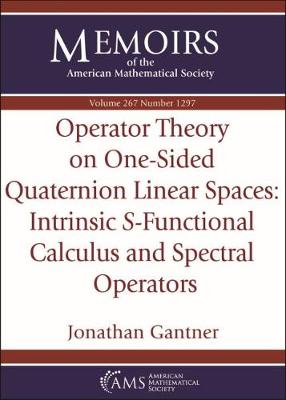Memoirs of the American Mathematical Society
1 total work
Two major themes drive this article: identifying the minimal structure necessary to formulate quaternionic operator theory and revealing a deep relation between complex and quaternionic operator theory.
The theory for quaternionic right linear operators is usually formulated under the assumption that there exists not only a right- but also a left-multiplication on the considered Banach space V . This has technical reasons, as the space of bounded operators on V is otherwise not a quaternionic linear space. A right linear operator is however only associated with the right multiplication on the space and in certain settings, for instance on quaternionic Hilbert spaces, the left multiplication is not defined a priori, but must be chosen randomly. Spectral properties of an operator should hence be independent of the left multiplication on the space.
The theory for quaternionic right linear operators is usually formulated under the assumption that there exists not only a right- but also a left-multiplication on the considered Banach space V . This has technical reasons, as the space of bounded operators on V is otherwise not a quaternionic linear space. A right linear operator is however only associated with the right multiplication on the space and in certain settings, for instance on quaternionic Hilbert spaces, the left multiplication is not defined a priori, but must be chosen randomly. Spectral properties of an operator should hence be independent of the left multiplication on the space.
